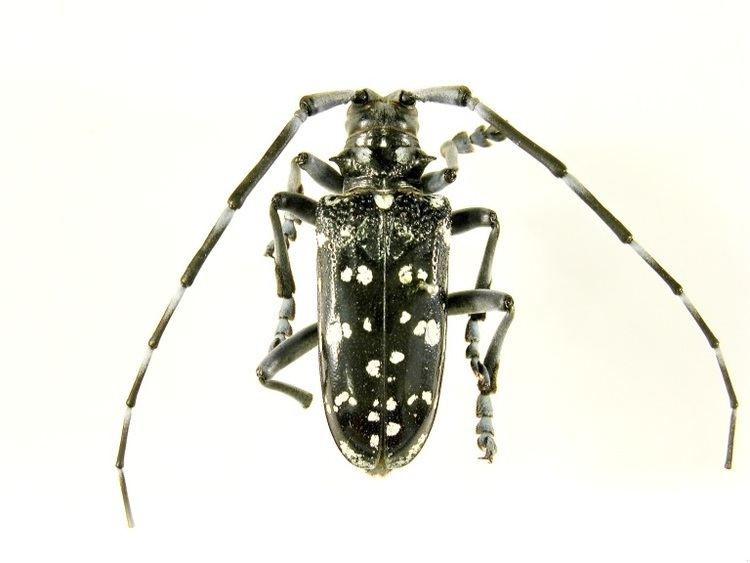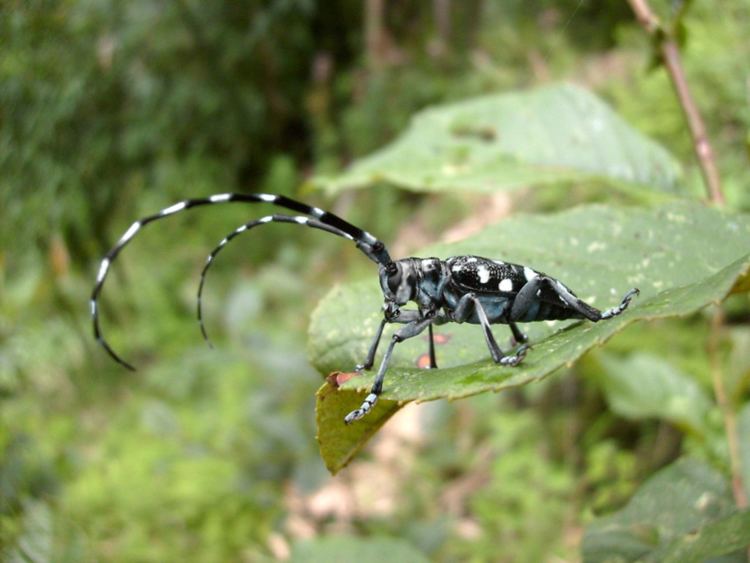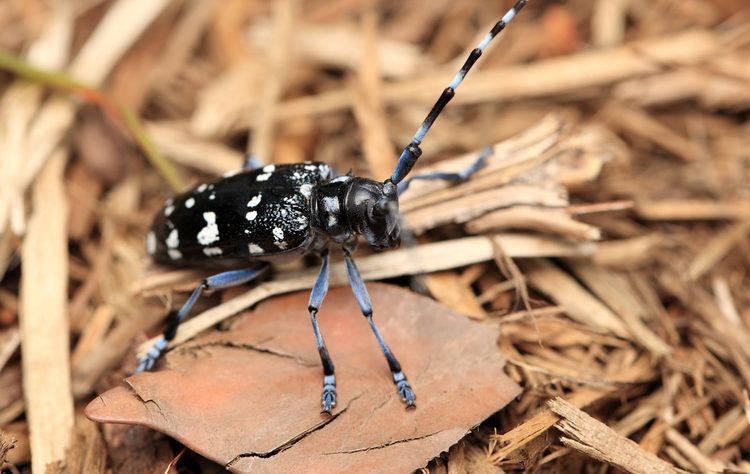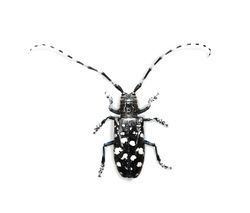Order Coleoptera Subfamily Lamiinae Higher classification Anoplophora | Family Cerambycidae Tribe Monochamini Rank Species | |
 | ||
Similar Longhorn beetle, Anoplophora, Insect, Asian long‑horned beetle, Beetle | ||
The citrus long-horned beetle (Anoplophora chinensis) is a long-horned beetle native to Japan, China and Korea, where it is considered a serious pest.
Contents

Each female citrus long-horned beetle can make up to 200 eggs after mating, and each egg is separately deposited in tree bark. After the beetle larvae hatches, it chews into the tree, forming a tunnel that is then used as a place for beetle pupation (the process of growing from larvae to adult). From egg-laying to pupation and adult emergence can take twelve to eighteen months.

Infestations by the beetle can kill many different types of hardwood trees as well as citrus trees, pecan, apple, Australian pine, hibiscus, sycamore, willow, pear, mulberry, pigeon pea, Chinaberry, poplar, litchi, kumquat, Japanese red cedar, oak, and Ficus.

In America

The citrus long-horned beetle poses an unprecedented threat to the environment in North America because it attacks healthy trees and has no natural enemies. Not only are greenbelts, urban landscapes and backyard trees at jeopardy, but also orchards, forests, and endangered salmon, and wildlife habitat.
The citrus long-horned beetle was first discovered in the U.S. in April 1999, when a single beetle was found in a nursery greenhouse in Athens, Georgia on certain bonsai trees imported from China. More seriously, the beetle was later discovered on 9 August 2001, at a Tukwila, Washington nursery near Seattle in a shipment from Korea of 369 bonsai maple trees. Three of the beetles were captured at the nursery, including a mated female ready to lay eggs, but when the bonsai trees were dissected, eight larvae exit tunnels were found, indicating that five more might have escaped into the surrounding community. Those five could lead to thousands of others because females lay 200 eggs at a time beneath the bark of trees. Because this beetle may have other outlying infestations that are yet to be discovered, it is important not to move firewood even in areas with no known pest infestations.
UK
The beetle was found in several sightings in Essex in 2008.
